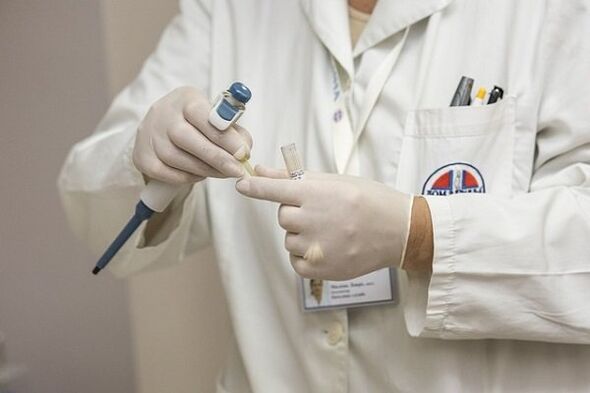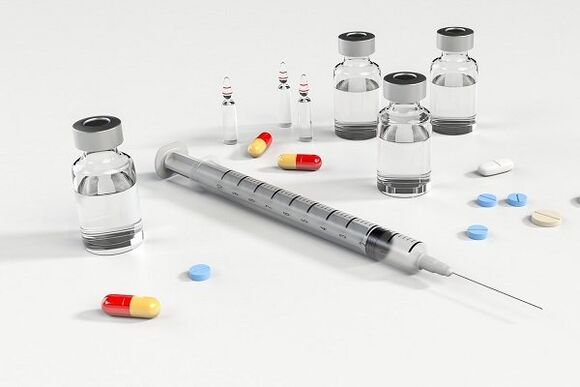
Prostatitis is an inflammatory disease of the prostate gland.Pathology occurs quite often, almost every second man after 60 years suffers from a degree or another of prostatitis.The disease occurs against the backdrop of degenerative changes in the prostate, and can also be a consequence of the gland infection.
Prostate inflammation greatly violates the quality of life of the patient, provoking pain, erectile dysfunction and urinary incontinence.Prostatitis also increases the risk of adenoma and cancer.This is why all men are recommended to get acquainted with the symptoms of prostatitis and, when they appear, immediately contact the andrologist for further examination and the prescription of treatment.
The first signs of prostate
What symptoms will occur with the prostatitis depends on its shape.The disease can be provoked by age -related changes, or an infection, in particular, bacterial, viral or fungi.Symptoms in one case or another may vary.The severity of prostatitis manifestations also depends on the stage of the disease.
The first signs of prostate inflammation:
- Different types of problems with urination: difficulty sealing urine, frequent stimulation, urine release points, burning and pain.
- Pain in the groin of varying intensity.
- Pain during defecation.
- Pain during shedding.
- Disinfilled to varying degrees: rapid ejaculation, insufficient penis stress, weakening of an increase during sexual intercourse.
Often, nothing bothers patients at all, and they refer to the doctor for examination due to infertility.The prostate exacerbates the quality of the sperm, so a man with such a disease will most likely not be able to create a baby.Thus, male infertility can also be attributed to one of the symptoms of prostatitis.
Prostatitis treatment methods
On the basis of only symptoms, prostate treatment is not prescribed because it is very important to understand what caused the inflammatory process and eliminate it.If this is not done and start the therapy blindly, then it is likely to be ineffective.
Prostatitis treatment is complex.During the period of irritation, the patient is recommended to abandon sex, severe physical exercise.It is necessary to observe the bed rest, eat healthy and easily soluble foods and follow all the recommendations of the attending physician.

Drug treatment of prostatitis
Treatment of prostate drugs is the basis of the therapeutic course.Consider which medicines are prescribed for prostate inflammation.
Anti -inflammatory drugs relieve inflammation, pain and heat.
Spasmics eliminate polished muscle spasm and normalize urine outflow.
Antibiotics are prescribed for a bacterial infection.There are several groups of such medicines:
- Penicillin;
- Fluoroquinolones;
- Macrolides;
- Tetracycline;
- Cephalosporins;
- Aminoglycosides.
Kind what kind of antibiotic will be prescribed depends on the bacterium that provoked inflammation.It can be detected by analyzing the tank planting prostate juice.
Alpha-blockers normalize urine flow and help eliminate prostate symptoms.
Preparations are prescribed not only in the form of tablets and injections, often patients are recommended by candles from prostatitis.They are anti -inflammatory, soothing soothing, antitumor, etc.The advantage of candles from the prostate is that they act directly on the focus of inflammation, which helps to rapidly eliminate pathology manifestations.
In the complex treatment of the disease, the use of vitamins and immunostimulating agents is indicated.They help strengthen the immune system and accelerate the patient's recovery.
Surgical treatment of prostatitis
If conservative therapy did not have the right effect, or the patient went to the hospital in the advanced stage of the disease, surgical treatment of prostatitis may be necessary.There are two types of operations: removing part of the prostate and removing the gland completely.
Both methods help eliminate inflammation seals, save the patient from persistent pain and difficulties in the urination process.Depending on the neglect of the issue, surgery can be performed using an endoscope, or a classic laparotomy method.
The surgery is told to patients who, against the background of the prostate, appeared stones in the prostate gland, benign or malignant formations.In the latter case, prostate removal is shown to avoid oncology relapse and prevent tumor metastasis.

Physiotherapeutic treatment and massage
An excellent addition to medication therapy is therapeutic treatment, in particular, prostate massage and visiting physiotherapeutic procedures.Both methods are shown after stopping an acute inflammatory process.During the period of prostate irritation, it is not extremely recommended to affect the prostate by physical methods.Massage will provoke increased pain and edema of the gland, which will only worsen the patient's condition.
After removing acute inflammation in the prostate gland and eliminating the pathogenic microflora, you can begin exercises of physiotherapy, massage and physiotherapy.These methods will improve the flow of prostate fluid, normalize blood flow to the pelvis, which will reduce the risk of relapse.
With prostatitis, the following physiotherapeutic methods are possible:
- electrical stimulation;
- ultrasound treatment;
- microwave therapy;
- magnetotherapy;
- Laser therapy;
- Reflexotherapy, etc.
The necessary method of therapy will be recommended by the andrologist, depending on the condition of the patient and the need to obtain this or that effect during treatment.
Methodology for the treatment of chronic prostatitis
Chronic prostatitis is a serious pathology, which is difficult to get rid of.The course of chronic prostate therapy is based on the following events:
- drug treatment;
- surgical intervention;
- Prostate massage and physiotherapy;
- Change in lifestyle;
- Use of homeopathic preparations in complex treatment.
During the period of worsening of the disease, when there is an acute urination, pain and manifestation of infection, treatment is performed similarly to acute prostatitis therapy.The patient is prescribed antibiotics, anti -inflammatory drugs, antispasmodic and other necessary medication.
During the prayer period, it is very important to pay attention to the prevention of irritation and prostate complications.For this, doctors make the following recommendations that need to be followed by life:
- Regularly examined and passing a course of antibiotics as prescribed by a doctor.
- Balance to eat, avoid vitamin deficiency, overweight, exhaustion.
- Wear heat, do not stay in a cold, wet room for a long time.
- It will be days to engage in physiotherapy exercises, making a bias in the lower abdominal muscles and pelvic floor.
- Regularly have sex (preferably every 3 days) so that there are no stagnant processes in the gland and prostate testicles.
- Do not smoke or drink alcohol.Bad habits provoke vascular spasm, disrupt blood circulation in the tissues of the whole organism, which is a provocateur of prostate relap.
In the treatment of chronic prostate, the use of homeopathic remedies is possible.Often, patients are recommended to use rectal candles with sea buckthorn, propolis, belladon and other components of plants and animals.In addition to candles, it will be useful to perform microclies with plants.
During the prayer period, patients are mandatory a prostate massage is shown.This method of therapy helps to improve blood circulation, flow of prostate juice and prevent the relapse of the disease.
cONcluSiON
Prostatitis is not an inevitable sign of a man's aging, this pathology is successfully eliminated if the patient was immediately subjected to adequate examination and therapy.If symptoms of prostatitis occur, treatment should begin immediately, under the control of a competent andrologist.The sooner the patient is consulted with a doctor, the easier it will be to get rid of the inflammatory process.



















